NAT 23.7%
Incumbent MP
Paul Toole, since 2011.
Geography
Central West NSW. Bathurst covers the major centres of Bathurst and Lithgow, and all of Bathurst, Blayney, Lithgow and Oberon local government areas, along with a small part of the Mid-Western regional council.
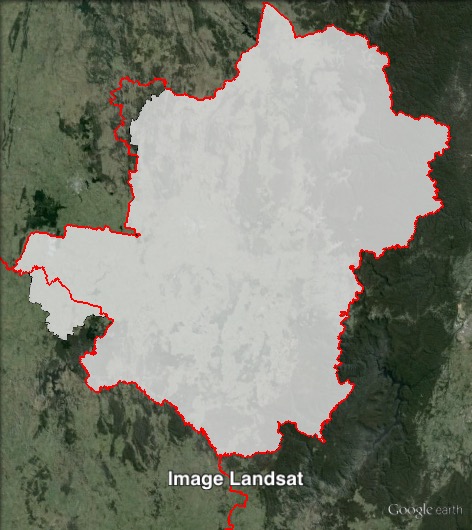
Redistribution
Minor changes to Bathurst’s western boundaries to align the electorate with local government boundaries, gaining the remainder of Blayney council area from Burrinjuck and losing a small part of the Cabonne council area to Orange. These changes had no impact on the margin.
History
Bathurst has existed as an electoral district since 1859. It existed as a single-member district for all but three elections in the 1920s, when it expanded to be a multi-member district elected by proportional representation.
The seat was a marginal seat between the Labor Party and the Country Party in the middle part of the 20th century, but since 1981 it has been dominated by the ALP, who have won it at all elections except for 1988, when it was won by the Liberal Party, and 2011, when it was won by the Nationals.
When Bathurst was restored as a single-member district in 1927, it was won by the ALP’s Gus Kelly, who had first won one of Bathurst’s seats in 1925. Kelly held the seat until 1932, when he lost to the Country Party’s Gordon Wilkins. At the next election in 1935, Kelly won the seat back. Kelly served as a minister for the entire length of the Labor state government from 1941 to 1965, and held Bathurst until his death in 1967.
The 1967 by-election was won by the Country Party’s Clive Osborne, who won a three-cornered contest on Liberal preferences. Osborne held the seat throughout the 1970s.
The redistribution before the 1981 election saw the strong Labor town of Lithgow moved from Blue Mountains to Bathurst. The sitting Labor Member for Blue Mountains, Mick Clough, moved with the town of Lithgow, and defeated Osborne’s re-election bid in 1981. Clough had held Blue Mountains since 1978.
Clough held Bathurst until 1988, when he lost to the Liberal Party’s David Berry. Clough won the seat back in 1991, and held it until his retirement in 1999.
Bathurst was won in 1999 by former Lithgow mayor Gerard Martin, running for the ALP. He won re-election in 2003 and 2007.
In 2011, Martin retired and Nationals candidate Paul Toole defeated Labor candidate Dale Turner with a massive 36.7% swing, the largest in the state.
Candidates
- Narelle Rigby (Christian Democratic Party)
- Cass Coleman (Labor)
- Paul Toole (Nationals)
- Tracey Carpenter (Greens)
- Tom Cripps (No Land Tax)
Assessment
Despite Labor’s recent history of holding Bathurst, the Nationals should have no trouble retaining this seat.
2011 election result
| Candidate | Party | Votes | % | Swing | Redist |
| Paul Toole | Nationals | 30,777 | 67.2 | +36.4 | 67.2 |
| Dale Turner | Labor | 9,607 | 21.0 | -32.5 | 20.9 |
| Diane Westerhuis | Greens | 2,843 | 6.2 | +1.4 | 6.2 |
| Richard Trounson | Independent | 2,596 | 5.7 | +5.7 | 5.6 |
| Others | 0.0 |
2011 two-party-preferred result
| Candidate | Party | Votes | % | Swing | Redist |
| Paul Toole | Nationals | 31,940 | 73.7 | +36.7 | 73.7 |
| Dale Turner | Labor | 11,426 | 26.3 | -36.7 | 26.3 |
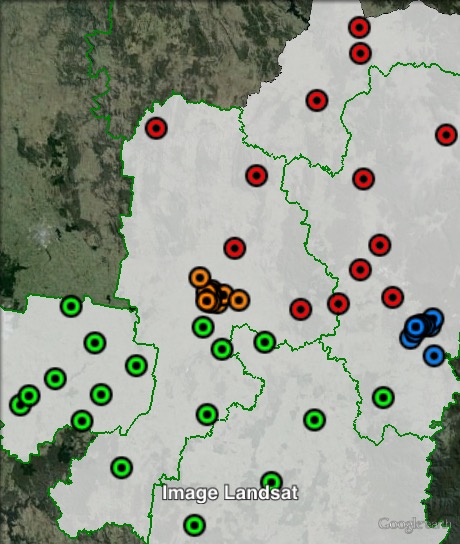
Booth breakdown
Booths in Bathurst have been split into four areas. Polling places in the two main cities of Bathurst and Lithgow have been grouped together, with the remainder of the electorate split into North and South.
The Nationals two-party-preferred vote ranged from 64% in Lithgow to 80.7% in the south.
| Voter group | NAT 2PP % | GRN % | IND % | Total votes | % of votes |
| Bathurst | 76.8 | 6.9 | 4.9 | 13,392 | 28.9 |
| South | 80.7 | 5.5 | 3.9 | 6,566 | 14.2 |
| Lithgow | 64.0 | 5.1 | 7.5 | 6,378 | 13.8 |
| North | 66.7 | 5.4 | 8.1 | 5,255 | 11.4 |
| Other votes | 74.4 | 6.7 | 5.3 | 14,688 | 31.7 |
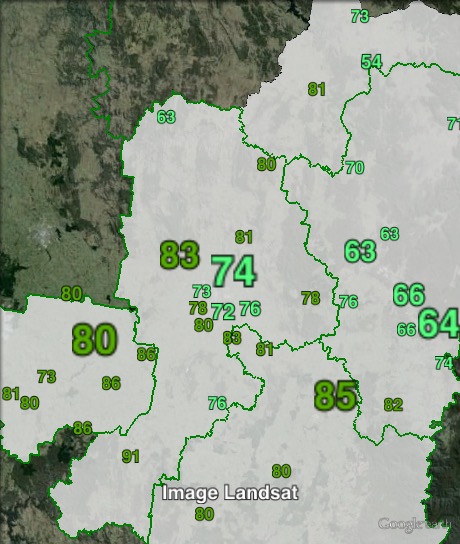
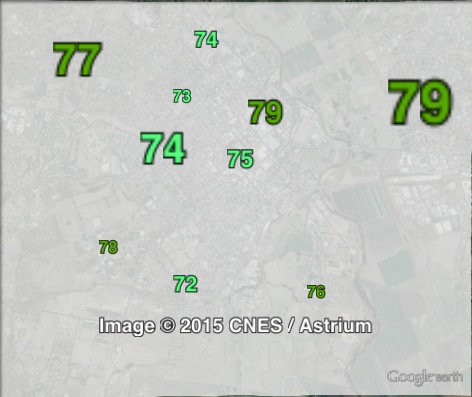
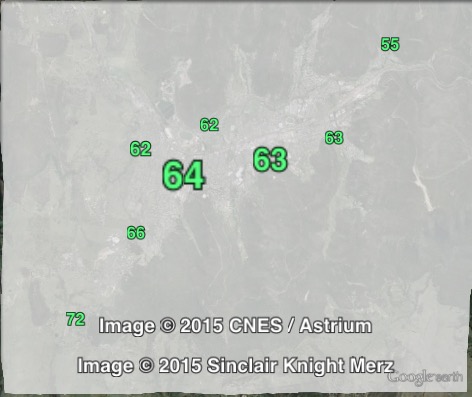


My prediction: Likely National hold, although given the way Bathurst swung in 2011, expect a large swing back to Labor.
I’m surprised that no-one’s talking about this seat as potential boilover material. Yes you can’t compare states, but this area seems similar to Bundaberg/Maryborough in terms of electoral history. In addition, isn’t this area linked heavily to the power industry, which the Coalition is trying to sell off? Add some rural discontent over the CSG issue and……
The positive thing for the Nats is that their candidate is really popular locally apparently.
“apparently”? With a swing like that, it’s beyond obvious. Everything went right for the Nats that day. A retiring Labor MP who had been popular there, a Nat candidate who was already locally popular, and a big anti-Labor swing on the state level. Add those all together, add a few points more for random noise, and it still doesn’t quite explain a swing like that. That’s the 100 year flood level, I suppose.
@Morgieb perhaps the concept of electricity privatisation may be contentious for bucolic areas, but I doubt it will count as much as you think simply for the fact that of the 3 state electricity providers, Essential Energy, the company that provides electricity to rural areas ISNT being privatised.
this seat is roughly half Bathurst and half lithgow…look at the 2pps roughly 6o% np Lithgow and 75% np Bathurst…… this is a hugely inflated margin….. if lithow voted 6o/40 ALP and Bathurst 60/40 np then would be very cl;ose…. Labor can poll better in both parts of this electorate
The big swing was against electricity privatisation, ironically. Lithgow exists to generate electricity. It’s what it does. Bathurst got shat on by the ALP in terms of service cuts. The former ALP member Mick “Bundy Bear” Martin was going to cross the floor to vote against electricity privatisation in 2008, which led to the end of Iemma. Although he’s from the Right his son is active in the Socialist Left of the ALP, which is kind of unusual. The ALP ran dead here last time. After iemma’s privatisation escapade (which included state forestry, a big employer) the ALP was ready to be lynched up here. And despite the mining CSG is an issue. But Timmy O’Toole has a winning smile and has dragged a lot of services back, but there will be a big swing back despite his efforts at socialism. The Nurses and ambos are out campaigning big time.